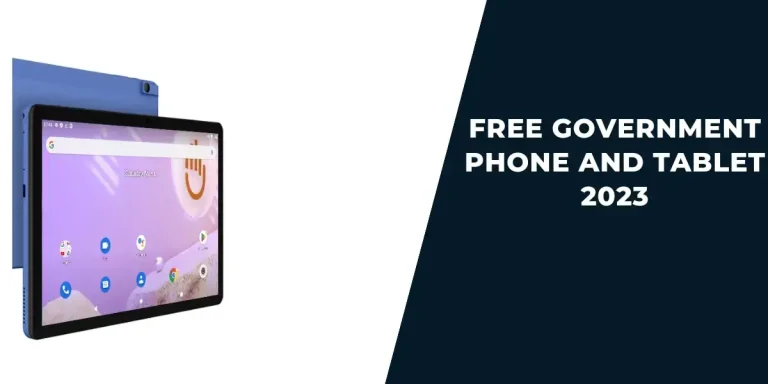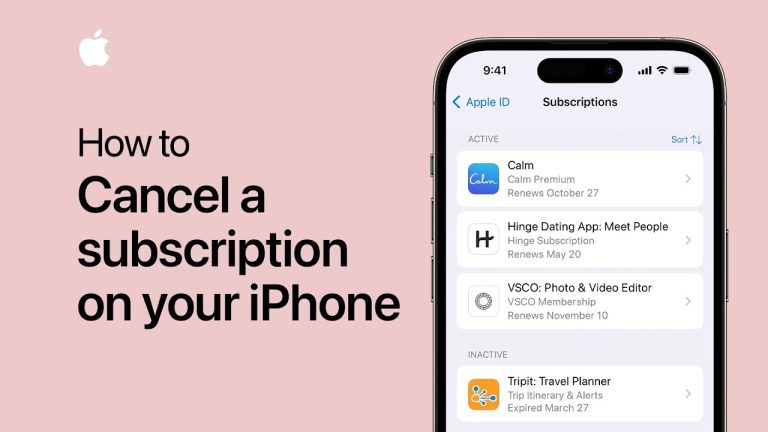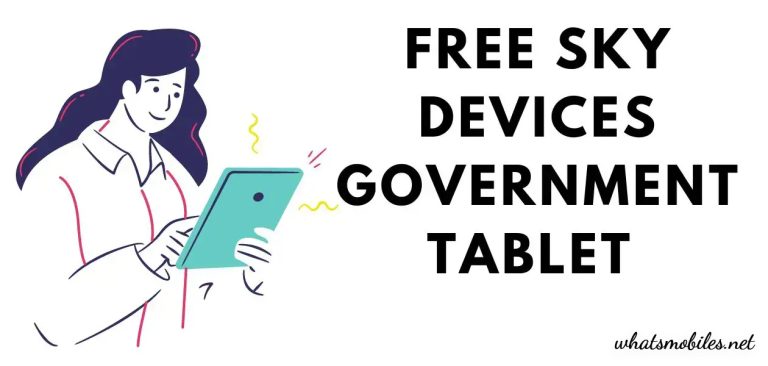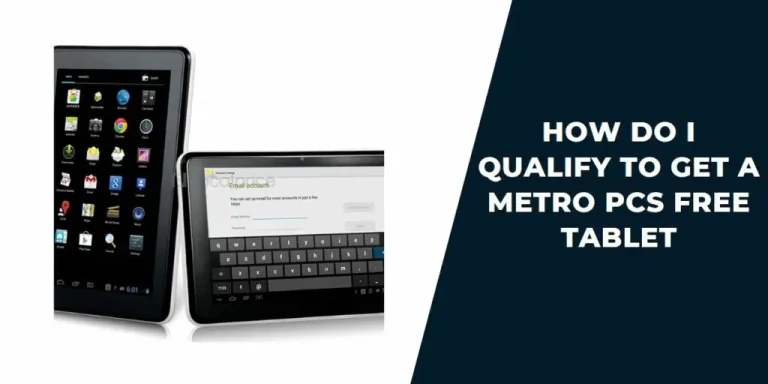Free Tablet By Government For Low Income Families 2023: For School, For Work, For Life
Free Tablets by Government for Low Income Families 2023: For School, For Work, For Life
Introduction
Free Tablet -In our rapidly digitizing world, accessing technology is not just a luxury but a necessity. Recognizing this, various government initiatives in 2023 aim to ensure that low-income families are included.
This guide will walk you through obtaining free government tablets to help bridge the digital divide.
The Importance of Free Tablets by Government
The digital age demands that every individual, regardless of economic status, has access to basic technology. For students to research, parents to work, or even stay connected in our social fabric, tablets have become integral.

How to Apply for Free Tablet From Government 2023
- Step 1: Review program-specific application procedures. Each program will have unique requirements. Do your homework to ensure you qualify.
- Step 2: Complete the application form. Ensure that all the required information is provided accurately to avoid delays.
- Step 3: Attach supporting documentation. Income proofs, ID proofs, and any other necessary documents will be crucial at this stage.
- Step 4: Apply. Follow the provided instructions to submit your application, either online or offline.
- Step 5: Follow up on your application. Keep a tab on your application status. Some programs may offer online tracking.
- Step 6: Await approval and tablet distribution. You’ll be informed of the following steps to receive your free tablet upon approval.
Getting a Free Tablet With an EBT Card
The Electronic Benefit Transfer (EBT) card, primarily associated with the SNAP program, can also be a gateway to access free tablets.
SNAP Program and Eligibility
To qualify for SNAP, families must meet specific income criteria and other conditions, which may vary from state to state.
Other Government Assistance Programs for Free Tablets
Various programs are intertwined with EBT to offer technological assistance, ensuring that low-income families can easily navigate the digital age.
Benefits of Technology Access for Low-Income Families
For low-income families, having a tablet means
Technology has become integral to our daily lives in the moment’s digitally-driven world.
These biases have changed how we communicate, work, learn, and access essential services, from smartphones to tablets and laptops. Still, only some have equal access to these technological sensations.
Low-income families, in particular, can significantly profit from having access to technology.
In this composition, we will explore the multitudinous advantages of technology access to low-income families, from educational openings for children to remote work possibilities for parents, access to healthcare services, fiscal operation, and staying connected with loved ones.
Educational Openings for Children
One of the most significant benefits of technology access for low-income families is its educational openings for children.
With the proliferation of online classes and coffers, scholars can now pierce a wealth of information and educational content at their fingertips.
Tablets, in particular, have become essential tools for enhancing learning gests.
Children can use this bias to pierce educational apps, e-books, and interactive literacy platforms.
This supplements their in-academy education and allows them to explore subjects and motifs of interest singly. Also, online literacy coffers frequently have features like quizzes and interactive assignments that make literacy engaging and fun.
By furnishing their children with tablets, low-income families can bridge the digital peak and ensure their kiddies have access to the same educational openings as their peers from more affluent backgrounds.
This boosts academic performance and opens doors to a brighter future.
Remote Work Openings for Parents
In a period where remote work has become decreasingly current, technology access is a game-changer for parents in low-income families.
With the right bias and internet connectivity, individuals can work from the comfort of their homes, barring the need for precious commutes and traditional office setups.
Tablets and laptops enable parents to pierce job openings that were preliminarily out of reach due to geographical constraints. They can take on freelance work, telecommute for companies across the country, or start online businesses.
This newfound inflexibility empowers parents to balance their work and family liabilities while furnishing their loved ones.

Access to Health Services through Telemedicine
Access to healthcare services is an abecedarian right. Yet, for numerous low-income families, it can be a challenge due to colorful walls. Technology access can break down these walls and bring essential medical care within reach.
Telemedicine, which involves entering medical consultations and advice through videotape calls and mobile apps, has gained significant traction recently. For low-income families, this means they can consult healthcare professionals without needing expensive and time-consuming visits to physical conventions.
Whether it’s a routine check-up, medical advice for a sick child, or internal health support, technology access ensures that families can instantly pierce the care they need. This saves time and plutocrat and contributes to more overall health issues.
Financial Management through Online Banking and Budgeting Apps
Managing finances is a pivotal aspect of daily life, and technology has revolutionized how we handle plutocrats. Low-income families can significantly profit from technology’s convenience and availability to fiscal operation.
Tablets and smartphones allow individuals to pierce online banking services, check account balances, transfer finances, and pay bills quickly. Also, budgeting apps give precious tools for shadowing charges, creating savings plans, and achieving fiscal pretensions.
For low-income families, these tools can be invaluable in maintaining fiscal stability and avoiding debt risks. With technology at their fingertips, they can make informed fiscal opinions and work towards a more secure future.
A Lifeline to Stay Connected with Loved Bones
Incipiently, technology access is a lifeline for low-income families to stay connected with loved ones especially when geographical distances or other circumstances make physical visits delicate.
Social media platforms, videotape calling apps, and messaging services enable families to bridge the gap and maintain strong bonds with cousins and musketeers.
In times of extremity or separation, like during a global epidemic, technology becomes essential for emotional support and maintaining a sense of community. It allows families to partake in updates, celebrate mileposts, and give each other important- demanded comfort and consolation.
Free Tablet With EBT: Which Programs Offer Them?
- Q Link Wireless provides eligible candidates with both free phones and tablets.
- Emergency Broadband Benefits (EBB) ensures families have internet access and the devices to use.
- T-Mobile, Easy Wireless, and StandUp Wireless also participate in providing free or discounted tablets to qualified individuals.
Receiving Your Free Tablet
Tablet Distribution Process
Upon approval, beneficiaries will be informed about the distribution method, from direct mail delivery to collection at local centers.
Setup and Activation Assistance
Most tablets come with easy setup guides. Some programs may also offer helplines or online tutorials.
Maintenance, Warranties, and Support
Ensure you understand the warranty that comes with your tablet. Support can range from technical troubleshooting to physical repairs.
Understanding Eligibility Criteria
Income-Based Qualifications
This is the primary factor. Each program will specify its income threshold for eligibility.
Special Groups
Veterans, older people, or families with students might have unique programs tailored for them.
Educational and Student Eligibility
Students, especially from low-income families, may have specific avenues to receive free tablets.
Geographic Location and Availability
Some programs are specific to certain states or localities.
Gathering Necessary Documentation
Proof of Income
This could be pay stubs, unemployment benefits, or tax returns.
Identification Documents
Typically, a government-issued ID will suffice.
Documents Demonstrating Eligibility for Special Groups
E.g., veteran status, student ID, or disability proofs.
Proof of Address
Utility bills or rental agreements can be used.
Identifying Eligible Government Programs
Federal Programs
Initiatives at the national level that provide tablets to underserved populations.
State-Level Programs
Programs run by individual states targeting their residents.
Local Government Initiatives
City or county-level programs for their communities.
Local Donation-Based Private Programs
Some NGOs or businesses might run donation programs to provide tablets to residents.
The Importance of Affordable or Free Government Tablets for Low-Income Families
In today’s fast-paced world, access to technology has become more critical than ever. From education to job openings, the digital realm likewise plays a vital part in enhancing the lives of individuals and families.
Still, only some can go with the right widgets and bias. This is where affordable or accessible government tablets step in, serving as a lifeline for low-income families. In this composition, we’ll claw into these tablets’ portability, versatility, and colorful use cases, emphasizing their significance and impact on the lives of those who need them the most.
Portability and Versatility of Tablets
Tablets have revolutionized the way we pierce and interact with digital content. Their satiny and featherlight design and essential features have made them necessary tools for people of all periods. The portability factor alone makes tablets a game-changer, as they can be fluently carried and used in colorful settings.
Education at Your Fingertips
One of the primary advantages of government-handed tablets is their donation to education. In a period where online literacy is increasing, these biases bridge the digital peak for low-income families. Scholars can pierce educational accouterments, interactive assignments, and digital libraries from the comfort of their homes.
Tablets offer a dynamic literacy experience with touch-screen capabilities, making it easier for youthful learners to grasp complex generalities. They also promote engagement through educational apps and interactive content, ensuring children stay motivated and interested in their studies.
Work and Skill Development
Beyond education, tablets play a pivotal part in enhancing the employability of parents and grown-ups within low-income homes.
Online courses and skill development programs have become increasingly accessible through these biases.
Whether learning a new language, acquiring specialized chops, or attending virtual shops, tablets empower individuals to expand their midair and secure better job openings.
Use Cases for Tablets in Low-Income Families
Bridging the Schoolwork Gap
The” schoolwork gap” refers to the difference in access to digital coffers among scholars, particularly those from low-income backgrounds.
Government-handed tablets help bridge this gap by ensuring pupils have the tools to excel academically. With a tablet, scholars can complete assignments, explore motifs, and unite with peers, regardless of their profitable circumstances.
Access to Vital Services
Government tablets also give access to essential services. They enable families to apply for government backing, access healthcare coffers, and stay informed about community events and coffers. Getting a Free tablets from government is now very easy with the help of our guidence.
This connectivity is vital for low-income families, ensuring they can receive the support they need to facilitate their quality of life.
Job Hunting and Career Advancement
For parents and grown-ups within low-income families, tablets offer a gateway to more job prospects. They can search for employment openings, produce and submit resumes, and attend virtual job interviews.
Tablets empower individuals to take charge of their careers, opening doors to new possibilities and fiscal stability.
Related Posts;






